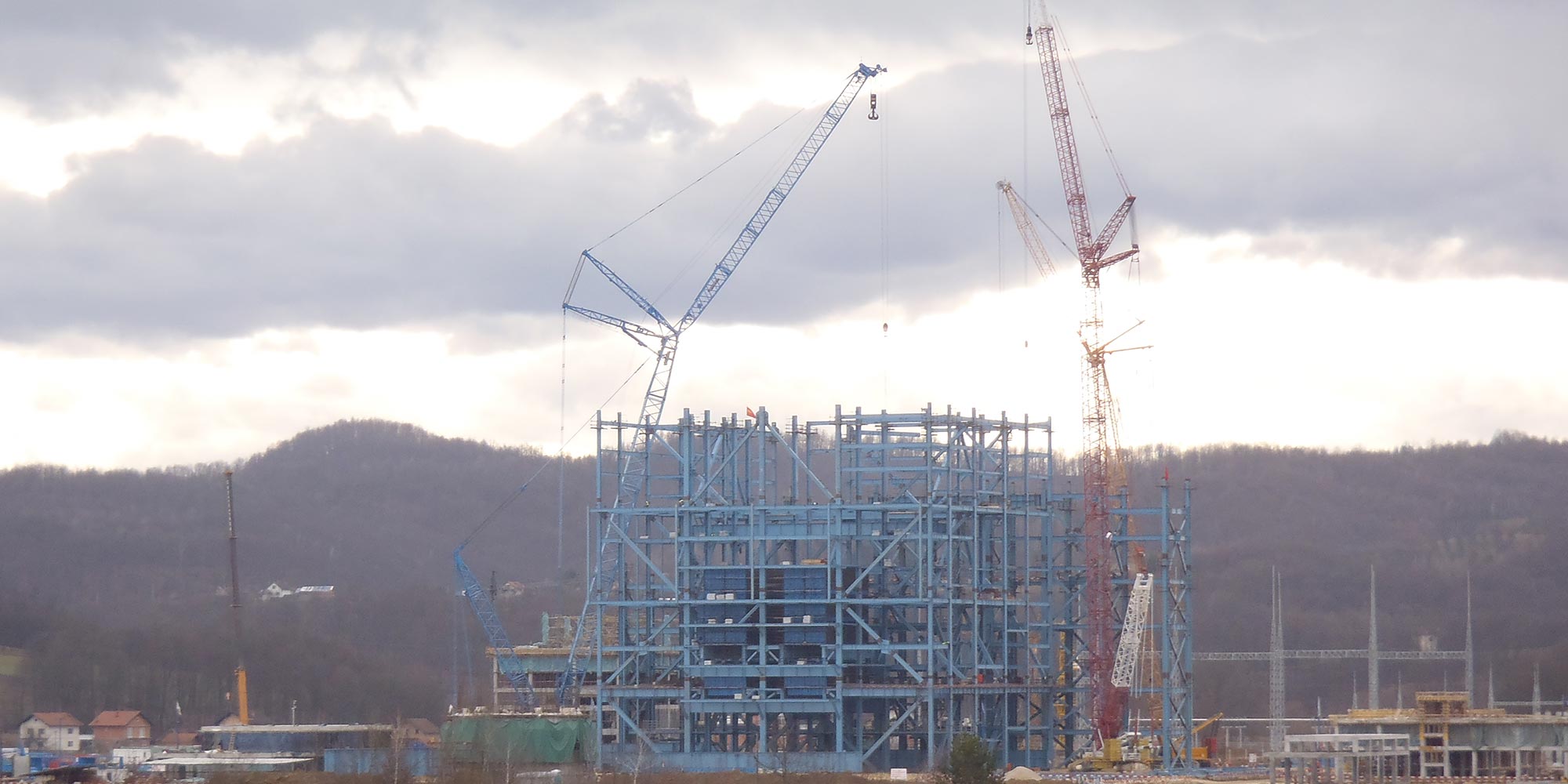Stanari lignite power plant, Bosnia and Herzegovina
EFT’s 300 MW Stanari power plant, constructed by China’s Dongfang, and financed by the China Development Bank, is located near Doboj in Bosnia-Herzegovina, in the Republika Srpska part of the country.

Stanari power plant under construction in early 2014
Stay informed
We closely follow international public finance and bring critical updates from the ground.
Background
Originally Stanari was planned to be a 420 MW plant but this was considered to be on the edge of economic viability and the capacity was reduced to 300 MW.
The plant officially started commercial operations in September 2016, but was already out of date in terms of environmental standards. Its environmental permit stipulates compliance only with the older EU Large Combustion Plants (LCP) Directive, not with the newer Industrial Emissions Directive.
During the project’s development a number of problems were raised, including the following:
No environmental impact assessment for the changed project
The environmental impact assessment process was carried out only for the original, larger version of the project and the Republika Srpska authorities did not require a new process for the new, smaller plant.
While it may appear that a smaller plant has a smaller environmental impact and therefore does not need a new study, several other changes were involved that could alter the situation:
- The project was originally planned to have a net thermal efficiency of 43 percent but the new version is down to 34.1 per cent.
- It was changed from supercritical pulverised lignite technology to subcritical circulating fluidised bed combustion.
- The cooling technology has also been changed from a wet to a dry cooling system. This is one of the main reasons for the loss of thermal efficiency.
Al Jazeera’s Dragan Stanimirović reports, the Stanari project is causing mixed reactions from local residents and concern to environmental groups about health impacts and CO2 emissions.
(Not available in English)
Environmental permit not compliant with pollution standards
Since 2006, Bosnia-Herzegovina has been a party to the Energy Community Treaty, which requires all members to abide by certain EU legislation in the energy sector.
This meant that while developing the Stanari project, Bosnia-Herzegovina was obliged to adhere to the EU Large Combustion Plants Directive, which regulates emissions limit values from power plants. Originally, the Republika Srpska authorities did not include the emissions limit values from the LCP Directive in Stanari’s environmental permit, but rather much laxer standards from domestic legislation with emissions 2-3 times higher.
In January 2014, an official complaint was submitted to the Energy Community Secretariat by the Center for Environment from Banja Luka and in July 2015 it was announced that the Stanari environmental permit would be updated following changes in the Republika Srpska legislation. Nevertheless, this still puts Stanari several years behind EU legislation.
Latest news
Ecologists warn that Residents around Stanari coal-fired Power Plant are regularly affected by Pollution from different Directions
Bankwatch in the media | 18 September, 2019The Stanari coal-fired power plant, which started operating in September 2016, its ash disposal site, and the already-existing open-cast lignite mine have formed a curve around the north and east of the village.
Read moreAlarmantna zagađenost vazduha štetnom prašinom u Stanarima
Bankwatch in the media | 17 September, 2019Alarmantna zagađenost vazduha štetnom prašinom u Stanarima
Read moreStanovnici Stanara se guše: Enormna zagađenost zraka
Bankwatch in the media | 17 September, 2019U Stanarima postoje alarmantne satne vrijednosti štetnih čestica prašine u zraku – pokazali su nezavisna mjerenja kvaliteta zraka, navodi se u izvještaju organizacije CEE Bankwatch koji je urađen u saradnji sa Centrom za životnu sredinu
Read moreRelated publications
Where will all that power go? New study assesses extravagant energy ambitions in the western Balkans
Bankwatch Mail | 14 May, 2015 |Western Balkan countries have ambitious plans to increase their electricity generation over the next years. But what will happen if they all become a regional energy hub? Will there be a demand for all the available electricity?
Stranded assets in the Western Balkans – report on the long-term economic viability of new export capacities
Study | 19 March, 2015 | Download PDFCountry chapters available for Albania, Bosnia and Herzegovina, Kosovo, Macedonia, Montenegro, Serbia. For other languages, see here. Analysing the estimated energy demand and production capacities in Western Balkan countries, this study shows that if countries realise their planned capacity expansions, the region will have a 56 per cent electricity surplus in 2024, led by Bosnia and Herzegovina and Serbia. Nearly all governments in the region aspire to become electricity exporters, but the study argues that if governments fail to take into account the regional perspective, they could end up with power plants becoming simply uneconomic to operate.
